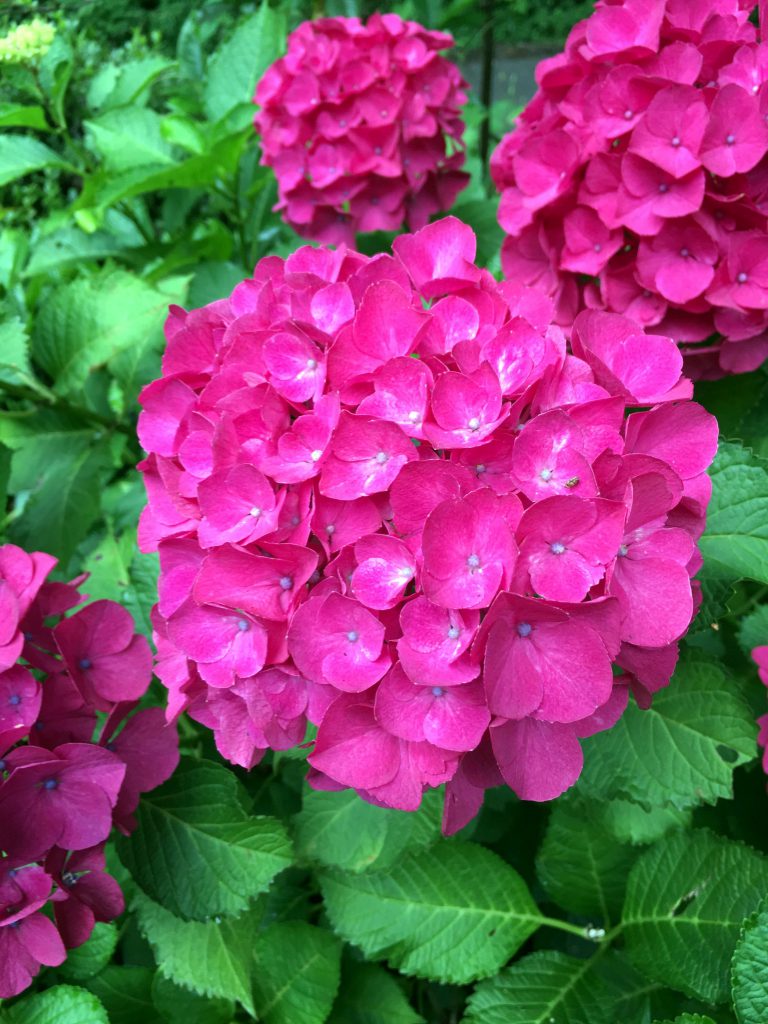
A group of Ajisai(hydrangeas) is in bloom near the clear stream in the mountains. The rainy season will soon clear up, so this is the last Ajisai of the year. This last Ajisai is the most beautiful Ajisai I’ve seen this year. I was able to see it without any worries. Ajisai is a deciduous shrub native to Japan with a height of 1 to 2 m. Potted flowers appear around April, but the original flowering period is from June to July. It is a popular flowering tree. The predominant theory is that the popular name of Ajisai is from “Azusai” which means “a collection of indigo”. The kanji notation “紫陽花” is the name given to lilac by the Tang dynasty poet Bai Juyi, and it is said that it spread to later generations because the scholar Minamoto no Shitagō in the Heian period applied this kanji to Ajisai. It is well known that the color of hydrangea changes depending on the pH (acidity) of the soil. It is generally said that “blue if acidic, red if alkaline”. It’s the opposite of the Lithomas test strip used in science experiments.
山間の清流のそばに一群れの紫陽花が咲いています。間もなく梅雨も晴れるでしょうから、今年最後の紫陽花です。この最後の紫陽花が今年見た中で一番美しい紫陽花です。心置きない見納めになりました。紫陽花は日本原産の樹高1~2mの落葉低木です。4月頃から鉢花が出回りますが、本来の開花期は6~7月です。額咲き、手まり咲きなどがあり、花色も豊富で、世界的に人気の高い花木です。アジサイの呼び名は、「藍色が集まったもの」を意味する「あづさい(集真藍)」が訛ったものとする説が有力です。漢字表記の「紫陽花」は、唐の詩人白居易がライラックに付けた名で、これを平安時代の学者源順がアジサイにこの漢字をあてたことから後の世に広がったと言われています。また紫陽花は土壌のpH(酸性度)によって花の色が変わりことはよく知られています。一般に「酸性ならば青、アルカリ性ならば赤」になると言われています。理科の実験で使われたリトマス試験紙とは逆ですね。
